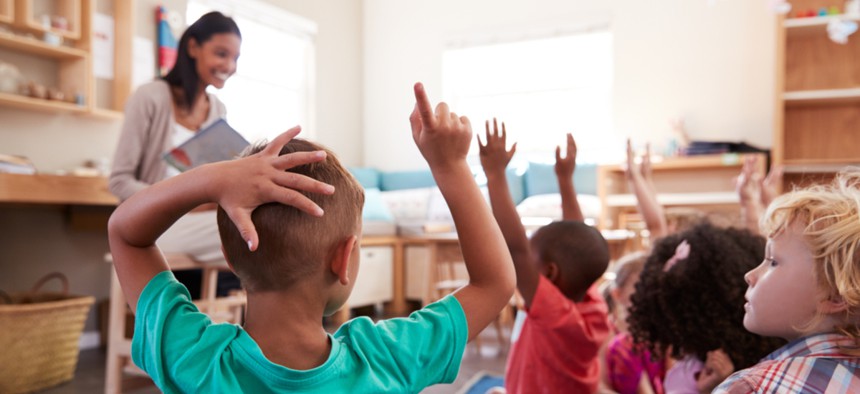Tackling the Teacher-Student Diversity Gap in K-12 Schools

Fifty-four percent of K-12 students in California are Hispanic, compared to 21 percent of teachers. Shutterstock
A partnership between a university and three community colleges in California aims to create more bilingual teachers while also diversifying the state's teacher pool.
A California university is partnering with three community colleges to address the state’s teacher-student diversity gap by recruiting and supporting students who wish to become bilingual educators.
The partnership between San Diego State University and Southwestern College, San Diego Mesa College and San Diego City College is financed through a $3.7 million grant from the federal Department of Education. The program—Developing Effective Bilingual Educators with Resources, or DEBER—aims to create a clear pathway for students to progress from high school to community college and onto San Diego State’s bilingual credentials program, which prepares educators to teach in dual-language K-12 classrooms. Participants—100 per year from each community college—will receive a stipend to cover the cost of learning materials, including textbooks and fees for professional exams.
The goal, officials said, is to give students a clear roadmap through the bilingual credentialing process, helping to increase the number of bilingual educators in the state while also diversifying the teaching pool to make it more closely resemble the student population.
In California, that means a focus on recruiting teachers who self-identify as Hispanic or Latino. According to state data, the K-12 student population is 54 percent Latino, while the teacher pool is 21 percent Latino—and that gap is likely to continue growing. Research indicates that children of color perform better in classrooms with teachers of color, so the gap could have tangible effects on a sizable portion of students.
“We know that when students are in classrooms where they see teachers that look like them or speak the language they do, they do better in school, so we’re playing a role in actively recruiting both Latinx and Spanish-speaking students but also recruiting bilingual teachers,” said Sera Hernandez, assistant professor in SDSU’s Department of Dual Language and English Learner Education and director of bilingual education for DEBER.
That type of coordination simply didn’t exist before, and was a major priority for the project, said Saúl Moldonado, assistant professor in SDSU’s Department of Dual Language and English Learner Education and project director for DEBER.
The program, which officially began Oct. 1, is mostly in the planning stages, with students expected to begin enrollment next year. The grant will fund five years of the initiative, after which officials are hopeful that the program will be able to continue on its own indefinitely to give it the best shot at helping more diverse K-12 education in the state.
“It’s about increasing access for our candidates, and how that will impact and influence many, many generations of students, long-term, at our K-12 levels so that they will have an opportunity to grow up bilingual and bi-literate,” Hernandez said. “It’s the gift I am giving to my own children that I didn’t have myself.”
Kate Elizabeth Queram is a Staff Correspondent for Route Fifty and is based in Washington, D.C.
NEXT STORY: America's Hottest Cities for Urban Planners





